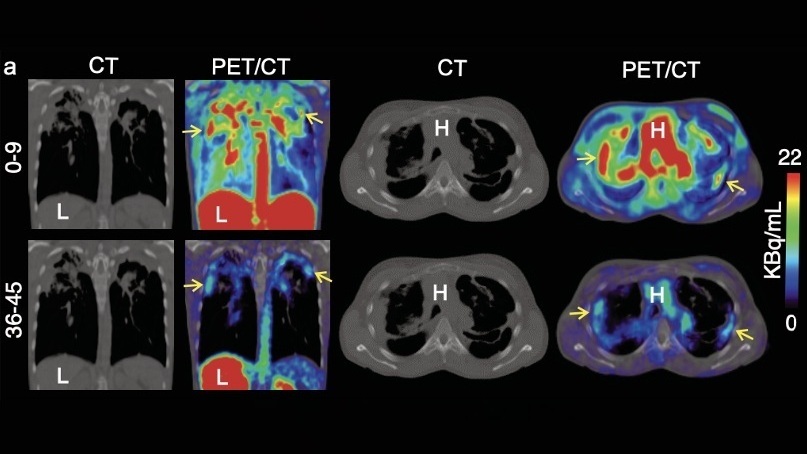Novel Bacteria-Specific PET Imaging Approach Detects Hard-To-Diagnose Lung Infections
Posted on 27 Jun 2025
Mycobacteroides abscessus is a rapidly growing mycobacteria that primarily affects immunocompromised patients and those with underlying lung diseases, such as cystic fibrosis or chronic obstructive pulmonary disease. Mycobacteroides abscessus lung infection is one of the most difficult-to-diagnose conditions in patients with lung diseases. Conventional imaging tools are unable to distinguish the bacterial infection from these inflammatory diseases, and definitive diagnosis often requires invasive procedures. Given the constraints of conventional imaging, there is a need for noninvasive, bacteria-specific imaging techniques that would be clinically valuable for diagnosing and selecting appropriate treatments for patients. Now, a new PET imaging technique can accurately detect and monitor Mycobacteroides abscessus lung infections. This innovation, presented at the 2025 Society of Nuclear Medicine and Molecular Imaging Annual Meeting, offers a promising new diagnostic tool that could significantly improve diagnosis and treatment decisions for patients with chronic lung infections.
Researchers at Johns Hopkins University Medical School (Baltimore, MD, USA) evaluated the effectiveness of a new PET imaging approach to differentiate Mycobacteroides abscessus from the general inflammation that characterizes other lung diseases. Researchers tested the new technique—11C-PABA PET—in both preclinical and clinical settings. In vitro studies were first performed to confirm that 11C-PABA accumulated in the bacteria. Next, dynamic 11C-PABA PET was performed in a mouse model of Mycobacteroides abscessus pulmonary infection. Moving to the clinic, a 33-year-old patient with cystic fibrosis and microbiologically-confirmed Mycobacteroides abscessus pulmonary infection also underwent dynamic 11C-PABA PET.b

11C-PABA uptake was observed in all in vitro studies, and sustained accumulation of 11C-PABA was noted in the lung lesions of Mycobacteroides abscessus-infected mice. In the patient with cystic fibrosis, dynamic 11C-PABA PET demonstrated significantly higher PET uptake in the affected lesions compared to the unaffected lung, confirming the Mycobacteroides abscessus pulmonary infection.
“This proof-of-concept data highlights the potential of 11C-PABA PET as an innovative, bacteria-specific, non-invasive and clinically-translatable diagnostic tool,” said Yuderleys Masias-Leon, MD, a postdoctoral research fellow at Johns Hopkins University Medical School. “In the future, 11C-PABA PET could offer rapid and accurate diagnosis to facilitate precision medicine and individualized care for patients with this infection.”
Related Links:
Johns Hopkins University Medical School














